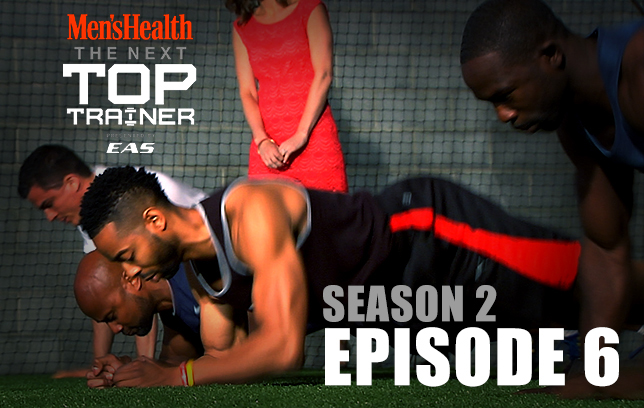With every blogpost, newspaper article, book, magazine or other reading material, there will be editing and proofreading involved. If no proofreading was involved, you would notice. The proofreading stage is done after editing, and before we go to print, or before we publish. It is the exercise conducted to reduce the number of mistakes or inconsistencies found in a piece of writing.

That said, it is quite rare to find a piece of writing that is flawless and free from mistakes – even dictionaries are said to contain mistakes missed by their editorial crew. But if you don’t want to torture your readers, you cannot skip proofreading your posts.
So How Does Proofreading Work?
The key to proofreading is to detach yourself from the work or to look at it under unfamiliar settings.
Why? Well, the brain is a know-it-all that likes to fill in the blanks for us and makes us miss things that are “right there”. With a work that we are familiar with, the brain knows how the next scene is going to play out. Under these circumstances, it becomes easier for us (or our brains) to miss typos that are hiding in plain sight.
Check out this simple exercise to get an idea of how our brain loves to screw us over all the time.
How to Proofread
The easiest way to get proofreading done is to get someone else to do it for you. Fresh eyes pick up more mistakes, and just about anyone can do a quick proofreading job. They just need to have a good enough grasp of the language to pick up the typos and irregularities.
If you want to go in-depth with proofreading or to do your own proofreading, here are some tips and techniques that may help.
1. Read It Out Loud
You can read the post out loud or to yourself (if you are in a public setting). If there is dialog in your writing, give it voices so that you can attach different personalities to your characters. If it is a speech, read it like you are in front of your audience – dramatize it, strive for perfection, and your mind will become more sensitized towards mistakes and typos.
2. Print It and Read it with a Pen
For lengthier posts, or assignments, I would suggest printing out the post to read. More importantly, hold a pen while you read, and don’t be afraid to use it. When you allow yourself to “mark” your own article, you will “accept” the fact that the post is not yet ready, and there is still work to be done.
You will be amazed at how many typos you can find with this method. I find bright colored ink works better than black or blue, but that’s just me.
3. Change Elements of the Piece
If you don’t want to read out loud or don’t have a handy printer around, you can do proofreading on-screen but you will need to change the “in-house environment” of the piece.
(1) Break down your piece into 3 to 4 lines for better clarity. Paragraphs that are too lengthy overburdens your short-term memory. Sometimes by the time you get to the end of that paragraph, you might have forgotten what you’ve read near the beginning. You can put everything back to its “original position” when you’re done.
(2) Change the font size or typeface. I have a specific typeface and font size that I am more comfortable with; you will need to find yours. If it is possible, publish your pieces in this comfort font. If you don’t want to make typeface changes, you can zoom in instead.
(3) Try changing the spacing (as in 1.5 or double spacing) of the piece. If there is a lot to work with, you can split the post into two columns to make it easier on the eyes. Don’t underestimate how big of an influence spaces can have on your reading,
(4) When in doubt, leave the piece aside for a while – maybe 10 days to 2 weeks. Work on something else first and totally distance yourself from the product. By the time you go back for a second look, it’s like reading it for the first time. If it isn’t, then give it a couple more days.
4. Don’t Trust the Spellchecker. Not Fully.
It is okay to depend on the spellchecker for most spellchecks but remember that it cannot recognize context, which means it will block words like “infinitesimal” or “compartmentalization“whenever there is a typo but allow a mistake like this too go through. Like a traffic light, spellcheckers should not be trusted fully – they are tools, and tools have limits and faults too. Don’t let your trust in them be the reason for your mistakes.
5. General Tips on Proofreading
(1) Always use copy paste, don’t rewrite a word that is already there. Copy-pasting minimizes errors.
(2) When making a correction that spans a few words, read it on the spot to check for any mistakes. Then read it again during the next cycle. Mistakes that you introduce to a post is a major no-no.
(3) Never proofread until the editing process has been completed, otherwise that proofreading round is basically pointless.
(4) In determining usage consistency, always confirm which version of the spelling or word is the right one, before you make the changes.
(5) Right up until it is time to print or publish, you might still find small mistakes and typos that you’ve missed. In books, these typos are removed in subsequent editions. In online publishing, the mistake can be rectified almost immediately.
(6) When in doubt, consult the dictionary. When you have two dictionaries telling you different things, follow the newer edition, or follow the one that is considered the authority in your publishing circle, so skip urbandictionary if you write for offline publications. Remember that language is “alive”.
(7) The writer of the post you are proofreading may argue with you on some of the grammar rules or changes imposed. What you should do, depends on the situation, but at the end of the day, it is the writer’s name on the post, so he or she should have the last say.
(8) To make sure you catch as many of the typos as possible, do repeated readings: proofread by cycles. I call them cycles because of the repetitive nature of this exercise. In each cycle, check just one particular issue, and ignore the rest; you will get to them eventually.
Here’s a sample routine you can adopt:
- Check two- and three-letter words. Sometimes they go missing. The culprits include ‘is’, ‘be’, ‘of’, ‘the’,’and’, ‘for’, ‘to’ – you get the idea.
- Check capitalization (you may need to be more particular with brands)
- Check subject-verb agreement. (Google has or have?)
- Check for the letter ‘s’ (the most notorious, confounding letter in the alphabet, ‘s’ can be found missing from plurals and tenses)
- Check punctuation and uneven spacing.
- Check if you closed the “quotes, (parenthesis, and [brackets you open.
- To hyphenate or not to hyphenate (this needs a post of its own, which I am ill-equipped to write)
- Check for consistency (if you are using email, go all the way. Ditto if you prefer e-mail, but never do both in the same piece)
- If you have particular formatting styles, check for consistency for this as well.
- If you included Figures with running numbers like Figure 1.1, Figure 1.2, do run a check as well to make sure the numbers are right.
- Check, check and triple check everything.
So that’s that!
Up to this point, we’ve looked into basic techniques that you can use in a proofreading exercise. However, if you want to go deeper, here are a few areas you have to be careful with.
The next section deals with English, the language, which I am far from being a subject expert in. With that in mind, please double check anything you are not sure with, using external sources from other sites or blogs, or with your grammar teacher, if you have one available.
Problem Areas
Truth be told, some of the most common typos appear in the shortest of words. Here’s a short list of the usual mistakes we make not only in articles but also when commenting or chatting:
1. Dealing with Contractions
This happens to a lot of writers and ever so often in comments as well.
- its, it’s
- your, you’re
- were, we’re
- their, they’re
Tip: If this is a common problem for you, swear off contractions and write out the full thing. “it’s” becomes “it is”, ” they’re”becomes” they are” and so on. This should continue until you have earned the right to use the apostrophes again.
Don’t judge a book by its cover. Unless it’s (it is) a really, really bad one.
2. Words that Sound Too Close for Comfort
Homophones are words that sound exactly like each other but are not spelled the same way, such as:
- to, too
- an vs and
- made vs maid
- for vs four
- weather vs whether
Tip: Sometimes you catch them, sometimes you don’t. I have no magic bullet to solve this problem. However, you can identify your weak spots and run a special check just for that word and its homophone.
3. Our Favorite Mistakes
Then, there is this group which just gets you when you are not looking. They don’t sound the same and carry totally different meanings but you see them misused in (too many) places on many occasion.
- form, from
- lose, loose
- then, than
- angle, angel
- bought, brought
For an explanation on how to differentiate some of the words listed above, check out this poster by the Oatmeal (if you need it desperately enough, buy the poster and slap it on your wall, don’t worry I don’t get paid anything if you do or don’t).
4. Too Much of the Same Thing
Another easy-to-miss typo hotspot is in the words that have the potential to carry two of the same letters, such as:
- accommodation (2 c’s, 2 m’s)
- occasionally (2 c’s, 1 s)
- millennium (2 l’s, 2 n’s)
- possession (total of 4 s’es).
- referring (two r‘s before -ing) but furthering and offering (one r‘s before -ing)
5. Separated By A Common Language
You may have noticed the use of ‘color’ and ‘colour’ in many publications, online and offline. Which of the two is correct? Well, it depends on who you are writing for. If you are writing for a U.S. audience, then words like
- colour, honour, neighbour, favourite, humour
are spelled:
- color, honor, neighbor, favorite, humor
Notice the missing ‘u’? I’m not sure what the reason is for this personal vendetta against the 21st letter of the alphabet considering that in both British and American spelling:
- Curious and viscous are spelled with a ‘u’
- Curiosity and viscosity are spelled without a ‘u’.
- four (4) and fourth (4th) are spelled with ‘u’s
- 40 is spelled as forty (no ‘u’)
- Pronounce comes with an ou, pronunciation only has just the one ‘u’,
- arduous, superfluous, and strenuous have two u’s each
American spelling also snips words like dialogue, catalogue and programme, leaving you with dialog, catalog and program. And let’s not forget the preference for –re in British spelling (centre, litre, fibre) while it is –er in American spelling (center, liter, fiber).
6. Rules Are Made to Be…
If you listened to your grammar teacher, you might have heard of the “i before e except after c” thing – it is what you use to remember if it is spelled receive or recieve.
Basically this rule is used to explain why i comes before e in words like
- hierarchy, pier, fiery
and e comes before i after a c
- conceive, receive, deceive, perceive
Note to self: maybe we should change the rule to i after e only before v.
The problem arises with words like
- weight, weird, height, foreign, their, atheist, neighbor
as well as in
- relief, mischief, piety, believe
(Note to self: Okay, this throws before-V out the window)
The frustrating thing with this language is that it gives off the feeling like it is making up rules and breaking them as it evolves.
Conclusion
We are now splitting infinitives, ending sentences with propositions while beginning them with conjunctions – things that will make purists and grammar nazis (or is it nazi’s) lose it big time.
Perhaps the most important thing I can share with you about proofreading is this: don’t get too pedantic about it – that means overly fussy. Once you’ve gotten the hang of proofreading, you might see mistakes everywhere – in blog posts, headlines, mail, emails, shop signage, brochure, etc. Refrain from trying to correct everything, for your sanity and for everyone else’s.
Secondly, chances are the things that drive proofreaders nuts are things regular readers like you and me don’t really notice. Don’t let the technicality of proofreading destroy a good story worth telling. Like the editing process, proofreading should help improve a post, not impede or ruin it.
Disclaimer: I am not an English teacher, please do not direct English grammar questions my way. If you do, I’d approach the problem like how the IT guy does it – I would Google it.







































No Comments